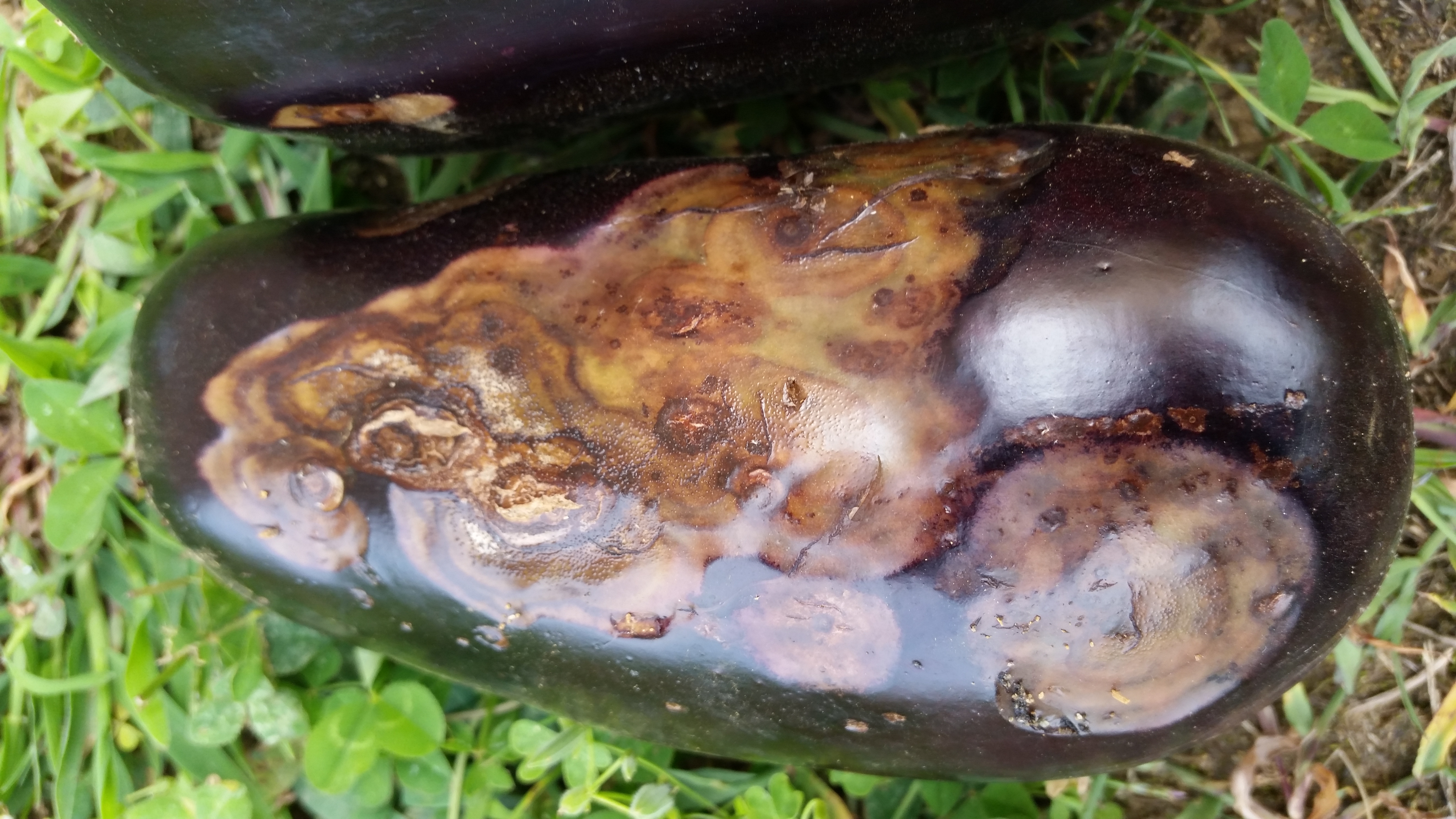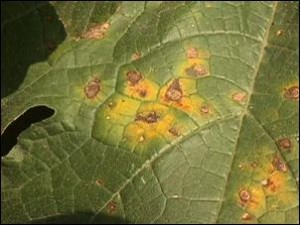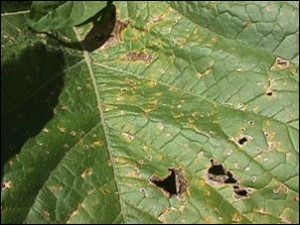Phytophthora blight, caused by Phytophthora capsici, can cause crown and fruit rot in eggplant. Unfortunately, most of New Jersey has been plagued by heavy rains and pop-up thunderstorms these past few weeks making conditions ideal for pathogens such as Phytophthora blight on pepper, eggplant, tomato, and cucurbit crops.
Control of Phytophthora blight is extremely difficult (even with the use of fungicides) in the very hot, wet weather conditions that most of New Jersey has been through during the month of July. In the past few years a number of new fungicides, with new active ingredients, have become commercially-available for use on multiple crops. Mefenoxam and metalaxyl, both once widely-used to effectively control Phytophthora blight have been hit by resistance issues around much of Southern New Jersey. Growers with a known history of mefenoxam-insensitivity on their farm should use Presidio or Ranman plus a Phosphite fungicide in rotation in their drip application programs for the control of the crown rot phase of Phytophthora blight. Importantly, if mefenoxam has not been used in particular fields on any crop for a number of years (more than 5+) the fungus may revert back to being mefenoxam-sensitive and control with these products may return. Mefenoxam, metalaxyl, and the phosphite fungicides are the most systemic of the group and should readily be taken up the by plant via application through the drip. Orondis Gold (OXTP + mefenoxam) is also systemic. Presidio is locally systemic, and Ranman has protectant activity and can also be applied via drip.
[Read more…]



